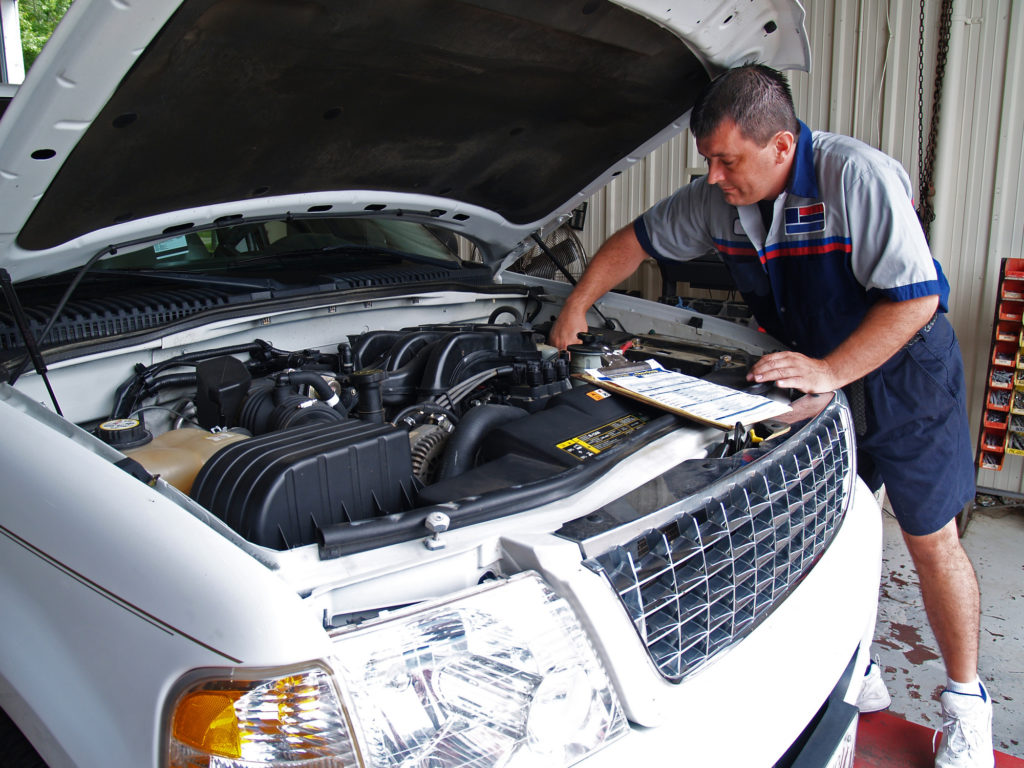The Only Car Maintenance Checklist You’ll Ever Need
Do you wonder how often you should get your oil changed or your tired rotated? Here’s your basic but effective car maintenance checklist.
What if we told you that you can save up to a whopping $30,000 as a car owner?
Pretty amazing right? At the same time, you may also have your doubts.
The truth is, you can enjoy this kind of savings, so long as you can keep your ride driving smoothly for up to 200,000 miles.
How exactly can you reach this milestone though? By making certain you follow everything on this car maintenance checklist!
Knowing when to replace your filters, change the oil, or have your tires aligned are all crucial to keeping your vehicle’s exceptional driving state for as long as possible. It’s also key to avoid becoming part of the millions of drivers who experience vehicle breakdowns.
Don’t worry. We’re here to make things easier for you. Keep reading to learn all about the right steps to include in your vehicle maintenance checklist!
1. Heed Your Manufacturer’s Maintenance Recommendations
Whether you go for a pre-owned car or a spanking brand-new one, you should always pay attention to the equipment manufacturer’s scheduled maintenance recommendations. You’ll find this in the user’s/owner’s manual that came with your purchase.
Note, however, that you also need to adjust based on your driving habits. Here are some of the factors that influence these adjustments:
- Fresh from the factory or used vehicle?
- The miles you drive and how often you put miles in your car
- Road and weather conditions you often drive in/on
- How old the automobile is
This said, if you drive more than the average motorist or if you often pass by poor roads, you should bring your ride more often to a professional mechanic. This also goes true for older vehicles, since many of them may lack today’s improved technology (such as active exhaust valves).
2. Keep Your (Car’s) Fluids in Check
Your car relies on different types of fluids to run efficiently. These include the oil, air conditioning coolant, washer fluid, as well as those for the radiator, transmission, and power steering.
The rule of thumb is to swap out a vehicle’s oil and oil filter after around 3,000 to 7,000 miles. Your trusted mechanic will also inspect the coolant, power steering, transmission, and windshield washer fluids during this time.
3. Know Your Vehicle Component Replacement Timeline
What do you do after putting in 15,000 miles on your gauge?
Change your air filter!
Then, once you’ve added another 5,000 miles to your gauge, have a pro inspect you’re the battery and coolant. After 30,000 miles, you need a new air filter again, as well as a change of power steering fluid.
After 40,000 miles of driving, it’s time for replacement spark plugs. Your vehicle’s ignition and suspension systems should also undergo a thorough inspection at this point.
As soon as you reach 60,000 miles, celebrate with a change of brake pads and brake fluid. Especially if you haven’t practiced correct braking distances in the past.
Your chosen mechanic should also inspect both the coolant and power steering fluids, then change them as needed. It’s also during this point wherein most radiator hoses already need swapping out.
4. Don’t Let Your Tires Tire Out
The tread of car tires, on average, last about three to four years. That’s how long your tire tread can last if you drive an annual 12,000 to 15,000 miles.
That doesn’t mean you need to change your tires soon after they turn three or four years old though. However, it also doesn’t mean you shouldn’t swap them out earlier just because the manufacturer said they can last for up to 10 years.
A good way to determine how worn your tires are is to check their tread wear. If the tread is already down 1.6mm, you should have them changed right away.
You can also use the tread pattern of your tires to know whether it’s time for replacement. If the tread wear bars have already become even or level (called “flushing”), take this as a sign you need replacement tires.
You should also make sure your tires keep their recommended pressure. Most tire manufacturers recommend a PSI level of between 30 and 35. But to be sure, check your owner’s manual.
Don’t forget regular tire rotation too. Have a professional mechanic rotate your tires after 6,000 to 8,000 miles, or at least after every six months.
All these help you keep tire wear and tear even while also saving you gas money. Overinflation and underinflation can both reduce performance, which leads to decreased fuel economy.
Just so you know, poor fuel economy causes the nation more than 1.25 billion gallons of gas.
5. Never Delay Repairs
Repairs play a huge part in your basic car maintenance program. Although you can give some of these repairs a go, many of them you should leave in the hands of pro.
For instance, if we asked you how to stop windshield crack, would you have a confident answer for us? Unless you’re an expert mechanic, you most likely won’t. As such, it’s best that you take your car for a windshield repair as soon as you notice cracks or webs on it.
Another example of a problem you shouldn’t delay the repairs of is a fluid leak.
For example, you notice that fluids pool up wherever you park your car. It’s possible that your steering system has an issue, and putting off the necessary repair can lead to your steering wheel locking up. That’s an accident waiting to happen, so prevent it from occurring by having a mechanic inspect it ASAP.
Keep Your Ride Longer by Following this Car Maintenance Checklist
So long as you follow everything in this car maintenance checklist, you have better chances of reaching that 200,000-mile goal (or at least close to it).
What’s more important though, is you can avoid becoming part of road crash statistics. Keep in mind that road accidents cause 2.35 million injuries or disabilities every year, something you’d want to avoid at all costs.
Want more tips and tricks like this? If so, then make sure you check our other blog posts out!











